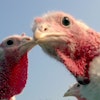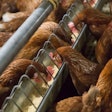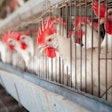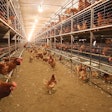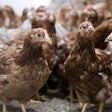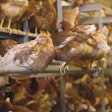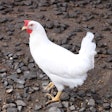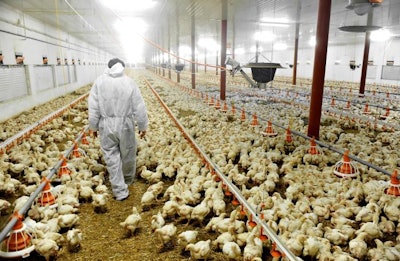
“No news is good news”. Chad Gregory, President and CEO, United Egg Producers, opened his presentation at the International Egg Commission (IEC) Business Conference in Monte Carlo, Monaco with these simple words describing the fact that there are no new reports of avian flu in the U.S. in the last few weeks.
In summation, since the 2014-2015 outbreak in the U.S., a total of 42 million birds were lost (36 million laying hens and between 5 million and 6 million pullets). The cost for the U.S. poultry industry was $1 billion for depopulation, disposal, and cleaning and disinfection.
“It was something we never want to repeat in the U.S.,” Gregory said.

Chad Gregory, President and CEO, United Egg Producers, says that poultry producers must have extreme biosecurity and must be willing to spend money on it. | Photo by Benjamín Ruiz.
The market in 2015 and 2016
The loss of 36 million layers represented losing 10 percent of the egg industry and one third of the egg product industry. Consequently, the market skyrocketed and egg farmers were very profitable in 2015 and 2016.
This high profitability led to affected farmers reinvesting in more poultry houses and repopulation. And those that were not affected, repopulated and increased stocking density. In 2015, the egg market in the U.S. grew.
In February 2016, there was a highly pathogenic avian influenza (HPAI) outbreak in a turkey farm in southern Indiana.
“The state department of agriculture acted very swiftly and within a couple of weeks, HPAI in the U.S. was stamped out,” Gregory said. It was evident that both the U.S. Department of Agriculture’s Animal and Plant Health Inspection Service and the state’s veterinary service did a very good job of controlling it.
2017 and beyond
This year, several low pathogenic H7N9 avian influenza outbreaks have been reported and only two cases of HPAI. The latter have been in small broiler breeder operations, mainly in the Southeast, but the disease is starting to move to the north.
A positive aspect – Gregory said – is that both, the low pathogenic and high pathogenic strains, are of the same North American genetic makeup and that they are not related to the Asian virus.
The U.S. egg industry, and the poultry industry as a whole, is expecting that the strains will remain low pathogenic and that with the warm weather coming up, it will die out and go away for the rest of the year.
Hoping it won’t happen again
Whether Europe, the U.S. or Mexico, the poultry industry worldwide is hoping that avian flu will not happen again. But Gregory feels anxious, because he believes “that this is the new world we actually live in. I do not believe that five or ten years from now, we will not know what the letters 'A' and 'I' mean. It is something we will have to learn to live with, forever.”
Some years ago, when the avian flu outbreaks in Mexico, César de Anda, President of the IEC, warned the audience about it and said it can happen to anyone. “And look, it happened to all of us,” the UEP president said.
The new world with more biosecurity
In this new world with avian flu, where we all might need to learn to live in, biosecurity is paramount. Poultry producers must have extreme biosecurity and must spend money on it. Otherwise, poultry producers will be very susceptible and might go out of business.
“Basically, these are the two choices,” Gregory emphasized. Avian flu “is here to stay and it is going to dominate IEC conferences”.


